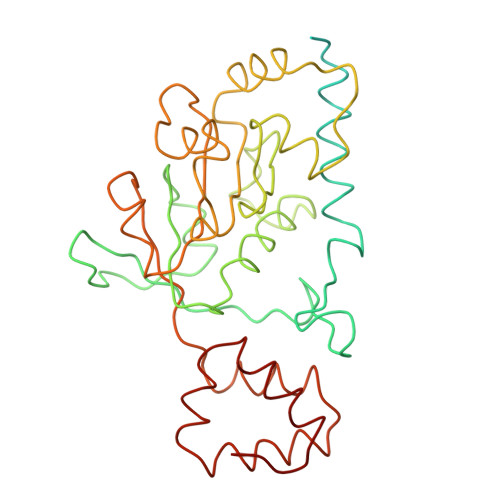Cryoelectron Tomography of the Naip5/Nlrc4 Inflammasome: Implications for Nlr Activation.
Diebolder, C.A., Halff, E.F., Koster, A.J., Huizinga, E.G., Koning, R.I.(2015) Structure 23: 2349
- PubMed: 26585513
- DOI: https://doi.org/10.1016/j.str.2015.10.001
- Primary Citation of Related Structures:
5AJ2 - PubMed Abstract:
Inflammasomes are high molecular weight protein complexes that play a crucial role in innate immunity by activating caspase-1. Inflammasome formation is initiated when molecules originating from invading microorganisms activate nucleotide-binding domain and leucine-rich repeat-containing receptors (NLRs) and induce NLR multimerization. Little is known about the conformational changes involved in NLR activation and the structural organization of NLR multimers. Here, we show by cryoelectron tomography that flagellin-induced NAIP5/NLRC4 multimers form right- and left-handed helical polymers with a diameter of 28 nm and a pitch of 6.5 nm. Subtomogram averaging produced an electron density map at 4 nm resolution, which was used for rigid body fitting of NLR subdomains derived from the crystal structure of dormant NLRC4. The resulting structural model of inflammasome-incorporated NLRC4 indicates that a prominent rotation of the LRR domain of NLRC4 is necessary for multimer formation, providing unprecedented insight into the conformational changes that accompany NLR activation.
Organizational Affiliation:
Department of Molecular Cell Biology, Leiden University Medical Center, P.O. Box 9600, 2300 RC Leiden, the Netherlands; Crystal and Structural Chemistry, Department of Chemistry, Faculty of Science, Bijvoet Center for Biomolecular Research, Utrecht University, 3584 CH Utrecht, the Netherlands.
















